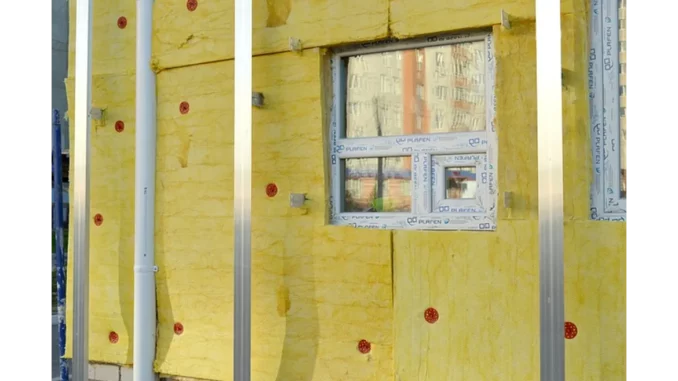
Recently, I had the privilege of engaging in a detailed discussion with Marcus Hargreaves, a seasoned architect boasting over two decades of experience in sustainable building design. Our conversation revolved around CPD 11 2024: Thermal Regulation and the Performance Gap, a continuous professional development module sponsored by Rockwool. This module delves deeply into the critical regulations and considerations surrounding a building’s thermal performance, and it underscores the pivotal role that stone wool insulation plays in bridging the performance gap. The insights gleaned from our conversation are invaluable for professionals across the construction industry.
Successful low-energy building design hinges on careful planning. Focus360 Energy can help.
Marcus began by elaborating on the historical evolution of U-value limits and building regulations, a major focus of the CPD module. “One of the most compelling aspects of the course is its comprehensive history of U-value limits,” he remarked. “It’s fascinating to observe the advancements since the initial U-value limits were established in 1965. At that time, the maximum U-value for a loft was 1.4W/m²K, achievable with merely 2.8cm of mineral wool insulation. The current, far more stringent standards reflect our heightened awareness of energy efficiency and environmental impact.” The progression of U-value limits has significantly shaped industry practices, and Marcus highlighted how these evolving standards have progressively enhanced building fabric quality, culminating in today’s rigorous requirements. He cited the 2006 introduction of minimum energy performance standards as a pivotal moment, laying the groundwork for subsequent changes spearheaded by initiatives such as the Future Homes Standard and the Passivhaus Standard.
A recurring theme in our discussion was the ‘performance gap’—the discrepancy between a building’s designed and actual energy performance. Marcus was forthright about the industry’s ongoing struggle with this issue. “The performance gap is a critical challenge,” he noted. “The CPD module does an excellent job of illuminating this by referencing studies from the Zero Carbon Hub and other research, which indicate that discrepancies often stem from inadequate installation practices or design complexities.” He underscored that even minor oversights can have profound consequences. “Research by Belgian professor J. Lecompte in 1990 revealed that an air gap as minute as 6mm can amplify heat transfer by 158% of the design value. This underscores the paramount importance of meticulous installation and consistent quality checks.”
A substantial portion of our conversation centred around stone wool insulation, particularly Rockwool’s contributions to mitigating the performance gap. “Stone wool is remarkably versatile and durable,” Marcus asserted. “The CPD module thoroughly explores its inherent properties, such as dimensional stability and resilience against building movements over time, making it an ideal choice for ensuring sustained thermal performance.” He shared case studies illustrating stone wool’s efficacy, including a notable example from Copenhagen Airport’s Hangar Four. Constructed in 1958, the hangar’s stone wool insulation was recently tested and found to have retained its performance remarkably well over 65 years, a testament to the material’s durability and reliability.
The CPD module also offers practical advice for designers and contractors, emphasising a fabric-first approach. “Getting the building fabric right from the outset is crucial,” Marcus advised. “This includes ensuring insulation continuity, avoiding thermal bridges, and maintaining airtightness—all vital steps in reducing the performance gap.” He pointed out the significance of photographic evidence in compliance reporting under new regulations, which mandate visual documentation of insulation type and continuity, thermal bridging details, and airtightness. This not only facilitates compliance but also provides a valuable record for inspections or future renovations.
Looking to the future, Marcus expressed optimism about the industry’s trajectory. “The Future Homes Standard aims to drastically reduce carbon emissions from new homes. By 2025, we anticipate a 75-80% reduction in CO2 emissions compared to current levels. Achieving this will necessitate high energy efficiency and the adoption of low-carbon heating systems.” He also noted the regional variations in standards, such as the Passivhaus Standard in Scotland, which require designers to be well-versed in local regulations. “While challenging, this is an exciting opportunity to significantly impact the built environment’s carbon footprint.”
As our conversation concluded, Marcus encapsulated his thoughts on CPD 11 2024. “This module is indispensable for anyone in the building industry. It not only provides a thorough overview of regulations and standards but also offers practical insights into closing the performance gap. With Rockwool’s sponsorship, the focus on stone wool insulation is particularly pertinent, given its proven efficacy and future potential.” For those seeking to deepen their understanding of thermal regulation and enhance their practice, CPD 11 2024 offers essential knowledge and practical tools. As Marcus aptly summarised, “It’s all about constructing better, more sustainable, and more efficient homes for the future.”


Be the first to comment